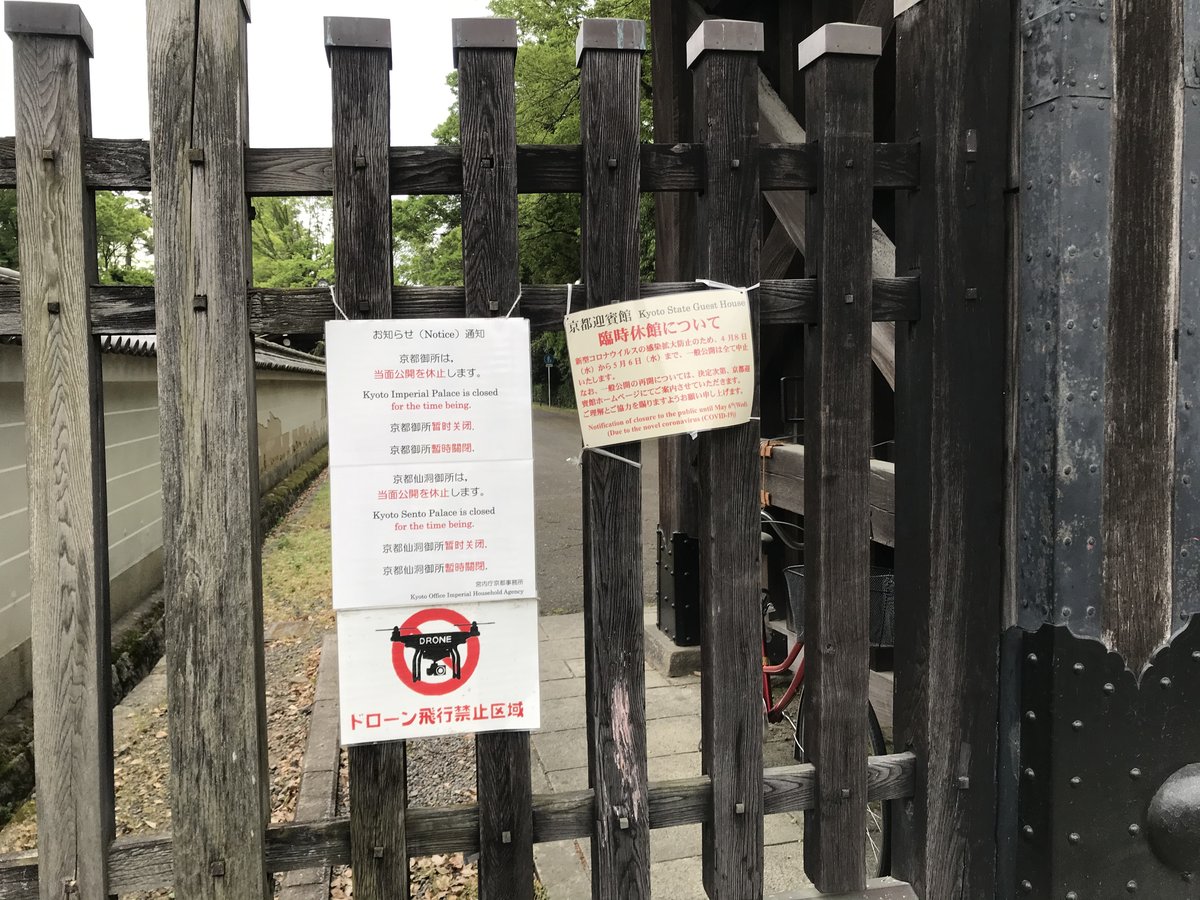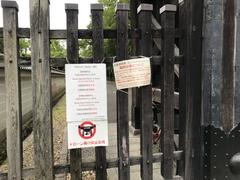
Kyoto State Guest House Visiting Hours, Tickets, and Travel Guide
Date: 15/06/2025
Introduction
The Kyoto State Guest House (Kyoto Geihinkan), nestled within the tranquil Kyoto Gyoen National Garden, stands as a symbol of Japan’s imperial heritage, architectural brilliance, and diplomatic tradition. Opened in 2005 to commemorate the 1,200th anniversary of Heian-kyo’s founding, it serves as a cultural bridge—welcoming dignitaries and the public alike into a world where traditional artistry and refined hospitality converge (Kyoto State Guest House History).
This guide provides all the essential information for a memorable visit—covering history, architectural highlights, garden features, visiting hours, tickets, accessibility, etiquette, and nearby attractions. Whether you are a history enthusiast, architecture aficionado, or cultural traveler, this comprehensive resource will help you plan an enriching journey to one of Kyoto’s most revered landmarks (Kanpai Japan).
History and Cultural Significance
Conceived to celebrate Kyoto’s enduring cultural legacy, the Kyoto State Guest House was commissioned in 1994 and officially opened in 2005, marking a new era for international diplomacy in Kyoto. Built within the historically rich Kyoto Gyoen National Garden—a site long associated with the Imperial family—the Guest House reflects centuries of tradition while accommodating modern diplomatic needs (Kyoto State Guest House History).
More than a venue for state functions, the Guest House is a living showcase of Kyoto’s art, architecture, and spirit. Its creation revitalized local crafts and traditions, symbolizing Japan’s commitment to preserving and sharing its cultural identity on the global stage (Kyoto State Guest House Official Site).
Architectural Highlights
The Kyoto State Guest House exemplifies the “modern Japanese” architectural aesthetic, harmoniously blending tradition with innovation. Designed in the sukiya-zukuri style, the structure features:
- Natural Materials: Extensive use of wood, stone, and paper, including 700-year-old zelkova for the main entrance doors (Geihinkan Official).
- Traditional Craftsmanship: Floors of treated Japanese elm, intricate shoji screens, and origami-inspired andon lamps made with Mino paper.
- Integration with Nature: The principle of “teioku ichinyo” ensures seamless transitions between interior spaces and the surrounding gardens, with wide eaves and low horizontal lines echoing the landscape (WOW U Travel).
Public areas such as banquet halls and conference rooms are open to visitors on guided tours, showcasing the best of Kyoto artisanship—woodwork, lacquerware, textiles, and seasonal ikebana displays tailored for visiting dignitaries (Tour Guide Japan).
Despite its traditional appearance, the Guest House incorporates modern technology for climate control, security, and earthquake resistance, demonstrating a careful balance of form and function.
Garden Features
The gardens surrounding the Kyoto State Guest House embody Japanese landscape design at its finest:
- Design Philosophy: Created by Uetoh Zoen under the guidance of Sano Toemon, the gardens utilize “shakkei” (borrowed scenery) to blend built and natural environments (Oniwa Garden).
- Seasonal Beauty: Cherry blossoms, maples, evergreens, and mosses provide interest throughout the year, reflecting the Japanese appreciation for nature’s transience (WOW U Travel).
- Artistic Elements: Stone lanterns, ponds with koi carp, a main waterfall by Masatoshi Izumi, and carefully placed rocks evoke Kyoto’s mountains and rivers.
- Accessibility: Pathways and verandas are designed to accommodate visitors of varying mobility, and guided tours offer in-depth insights into the garden’s symbolism.
Visiting Hours, Tickets, and Accessibility
Visiting Hours
- General Public Access: 9:00 AM–5:00 PM (last admission 4:00 PM or 4:30 PM, depending on the season).
- Closed: Mondays (or next day if Monday is a holiday) and New Year (December 28–January 4). Additional closures for official functions—check the official calendar before visiting.
- Guided Tours: Conducted in Japanese and English, with English tours often available at noon or by request (Kanpai Japan).
Tickets and Reservations
- Advance Booking: Strongly recommended, especially during peak seasons (cherry blossoms, autumn leaves). Reserve online until noon the day before your visit (official booking).
- Same-Day Admission: Limited entry slips may be available at the Seiwain Rest House starting at 9:30 AM. First-come, first-served; not reservable by phone.
- Admission Fees:
- Adults: 2,000 yen
- University Students: 1,500 yen
- Middle/High School Students (13+): 700 yen
- Children under 13 (including infants): Not admitted
Accessibility
- Wheelchair Access: Ramps, elevators, and accessible paths are provided; contact staff for specific accommodations.
- App Support: Download the official app for audio, text, and video guides.
Visitor Rules and Etiquette
- Security: Mandatory screening and bag checks at entry.
- Conduct: Quiet and respectful demeanor expected. Follow group and guide instructions at all times.
- Photography: Allowed in gardens and most outdoor areas; indoor photography may be restricted to protect artworks—always follow posted signs.
Nearby Attractions
Enhance your visit by exploring these nearby Kyoto historical sites:
- Kyoto Imperial Palace: Historic residence of the Emperor, with stunning gardens and architecture.
- Sentō Imperial Palace: Known for its serene landscape gardens.
- Nijo Castle: UNESCO World Heritage Site with impressive interiors and gardens.
- Nishiki Market: “Kyoto’s Kitchen,” famous for local foods and souvenirs.
- Orinasukan Museum, Raku Museum, Nishijin Textile Center, Kyoto International Manga Museum, Shimogamo-jinja Shrine: Each offers a unique perspective on Kyoto’s cultural legacy.
All are easily accessible by public transport or a short taxi ride from the Guest House.
Seasonal and Practical Travel Tips
- Best Times: Cherry blossom season (late March–mid-April) and autumn foliage (November) are especially beautiful.
- Weather: Dress in layers for spring and autumn; lightweight clothing and sun protection in summer; warm attire in winter.
- Arrival: Arrive at least 30 minutes before your scheduled tour for check-in and security.
- Nearby Facilities: Seiwain Rest House offers lockers and serves as the tour’s start/end point.
- Public Transport:
- Metro: Karasuma Line to Marutamachi or Imadegawa Station, then 15 minutes on foot.
- Bus: Furitsu Idai Byoin-mae stop, 7-minute walk.
- Parking: Limited; use public transport when possible.
Frequently Asked Questions (FAQ)
Q: What are the Kyoto State Guest House visiting hours?
A: 9:00 AM–5:00 PM, closed Mondays and during New Year holidays; verify the schedule online before your visit.
Q: How do I reserve tickets?
A: Reserve online until noon the previous day or obtain a same-day entry slip at the Seiwain Rest House if available.
Q: Are children allowed?
A: Only visitors aged 13 and above are admitted.
Q: Is the Guest House wheelchair accessible?
A: Yes, with ramps, elevators, and staff assistance available.
Q: Can I take photos inside?
A: Outdoor photography is generally allowed; indoor photography may be restricted—always observe posted rules.
Q: Are guided tours available in English?
A: Yes, with advance booking; download the official app for enhanced English-language support.
Visuals and Media
For a richer experience, explore the official website’s galleries and use the official app for virtual tours and interactive content. Consider taking photos of the gardens, architectural features, and seasonal highlights (e.g., “Kyoto State Guest House main entrance,” “autumn gardens,” “shoji-screened interiors”).
Conclusion and Travel Recommendations
The Kyoto State Guest House is an unparalleled destination for those seeking to immerse themselves in Japanese heritage, aesthetics, and diplomacy. From its masterful architecture and artisan-crafted interiors to its tranquil, ever-changing gardens, every detail reflects Kyoto’s timeless charm. Thoughtfully organized tours, accessible facilities, and proximity to other cultural treasures ensure a rewarding and seamless visit.
Pro tips:
- Book tickets in advance and check for schedule updates.
- Download the official app for interactive guides and language support.
- Combine your visit with other Kyoto landmarks for a complete cultural itinerary.
For further resources, travel tips, and updates on Kyoto’s historical sites, follow official channels and consider using travel planning tools such as Audiala.
References
- Kyoto State Guest House History, 2025, Official Geihinkan Website
- Kyoto State Guest House Official Site, 2025, Geihinkan
- Tour Guide Japan, 2025, The Kyoto State Guest House is a Modern Japanese Architecture
- Oniwa Garden, 2025, Kyoto State Guest House
- Kanpai Japan, 2025, Kyoto Imperial Palace and Guest House Guide













































































